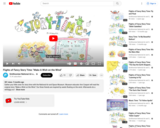
Our three friends are inspired by seeds floating on the wind. Afterwards do a whirligig craft.
- Subject:
- Life Science
- Material Type:
- Activity/Lab
- Provider:
- National Air and Space Museum
- Author:
- National Air and Space Museum
- Date Added:
- 09/14/2022

Our three friends are inspired by seeds floating on the wind. Afterwards do a whirligig craft.
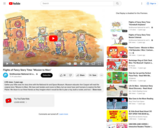
We return to our three friends as they imagine what it would be like to plan a trip, build a rocket, and travel on a mission to Mars.
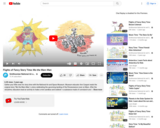
This story celebrates the upcoming landing of the Perseverance rover on Mars.
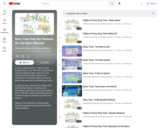
National Air and Space Museum offers stories for young children and their families inspired by our collection of air and space objects and historic photos.
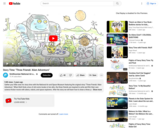
When Ruth finds a box of old comic books in her attic, the three friends are inspired to write and film their own science fiction movie with aliens, robots, and space explorers.
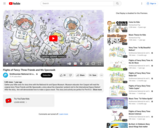
In this story the characters' pretend visit to the International Space Station!
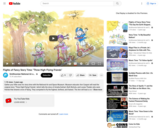
"Three High'Flying Friends," which tells the story of Amelia Earhart, Ruth Nichols, and Louise Thaden who were friends that shared a love of flying.

The three friends help a neighbor whose hat blows away and find out about weathervanes and wind direction. They make windsocks and spinning garden decorations.
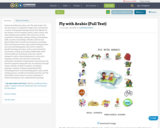
Authored by Belal Joundeya, the "Fly with Arabic" full text document is comprised of eight units, and features a variety of language-learning lessons tied together by fun themes, such as weather, sports, travel, school, and other hobbies and activities. The units focus on the acquisition of listening, reading, writing, and speaking skills, as well as knowledge of Arabic cultures and history.
Most units contain several lessons, including fill-in-the-blank exercises, open-ended writing practice, and word-matching games, that seek to reinforce specific learning outcomes, such as oral and written production, writing, and reading. Additionally, brief cultural drills are included in each unit, and are designed to add a cultural dimension to each unit's language activities. All units also contain self- assessment checklists to help monitor and measure the learner's progress during the unit.
In summary, through using a number of drills to produce vocabulary, grammar, reading, writing, and speaking skills, including pictures, word-matching games, open-ended writing practice, and fill-in-the-blank exercises, the "Fly with Arabic" series seeks to connect all phases of Arabic-learning into one comprehensive package.
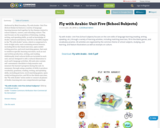
Authored by Belal Joundeya, Fly with Arabic: Unit Five (School Subjects) features a variety of language-learning lessons tied together by fun themes related to school subjects, careers, and schooling culture. The unit focuses on the acquisition of listening, reading, writing, and speaking skills, as well as knowledge of Arabic cultures and history.
Unit five is the fifth chapter in the "Fly with Arabic" series, which is comprised of a total of eight units, each containing several lessons, including fill-in-the-blank exercises, open-ended writing practice, and word-matching games, that seek to reinforce specific learning outcomes, such as oral and written production, writing, and reading. Additionally, brief cultural drills are included in each unit, and are designed to add a cultural dimension to each unit's language activities. All units also contain self- assessment checklists to help monitor and measure the learner's progress during the unit.
In summary, through using a number of drills to produce vocabulary, grammar, reading, writing, and speaking skills, including pictures, word-matching games, open-ended writing practice, and fill-in-the-blank exercises, the "Fly with Arabic" series seeks to connect all phases of Arabic-learning into one comprehensive package.
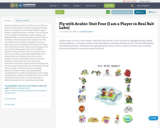
Authored by Belal Joundeya, Unit Four (I am a Player in Real Salt Lake) features a variety of language-learning lessons tied together by fun themes related to sports, hobbies, and general leisure activities. The unit focuses on the acquisition of listening, reading, writing, and speaking skills, as well as knowledge of Arabic cultures and history.
Unit four is the fourth chapter in the "Fly with Arabic" series, which is comprised of a total of eight units, each containing several lessons, including fill-in-the-blank exercises, open-ended writing practice, and word-matching games, that seek to reinforce specific learning outcomes, such as oral and written production, writing, and reading. Additionally, brief cultural drills are included in each unit, and are designed to add a cultural dimension to each unit's language activities. All units also contain self- assessment checklists to help monitor and measure the learner's progress during the unit.
In summary, through using a number of drills to produce vocabulary, grammar, reading, writing, and speaking skills, including pictures, word-matching games, open-ended writing practice, and fill-in-the-blank exercises, the "Fly with Arabic" series seeks to connect all phases of Arabic-learning into one comprehensive package.
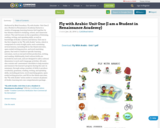
Authored by Belal Joundeya, Fly with Arabic: Unit One (I am a Student in Renaissance Academy) features a variety of language-learning lessons tied together by fun themes related to studying, school, and classroom culture. The unit focuses on the acquisition of listening, reading, writing, and speaking skills, as well as knowledge of Arabic cultures and history.
Unit one is the first chapter in the "Fly with Arabic" series, which is comprised of a total of eight units, each containing several lessons, including fill-in-the-blank exercises, open-ended writing practice, and word-matching games, that seek to reinforce specific learning outcomes, such as oral and written production, writing, and reading. Additionally, brief cultural drills are included in each unit, and are designed to add a cultural dimension to each unit's language activities. All units also contain self- assessment checklists to help monitor and measure the learner's progress during the unit.
In summary, through using a number of drills to produce vocabulary, grammar, reading, writing, and speaking skills, including pictures, word-matching games, open-ended writing practice, and fill-in-the-blank exercises, the "Fly with Arabic" series seeks to connect all phases of Arabic-learning into one comprehensive package.
.
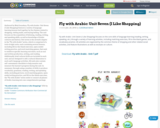
Authored by Belal Joundeya, Fly with Arabic: Unit Seven (I Like Shopping) features a variety of language-learning lessons tied together by fun themes related to shopping, visiting malls, and buying/selling. The unit focuses on the acquisition of listening, reading, writing, and speaking skills, as well as knowledge of Arabic cultures and history.
Unit seven is the seventh chapter in the "Fly with Arabic" series, which is comprised of a total of eight units, each containing several lessons, including fill-in-the-blank exercises, open-ended writing practice, and word-matching games, that seek to reinforce specific learning outcomes, such as oral and written production, writing, and reading. Additionally, brief cultural drills are included in each unit, and are designed to add a cultural dimension to each unit's language activities. All units also contain self- assessment checklists to help monitor and measure the learner's progress during the unit.
In summary, through using a number of drills to produce vocabulary, grammar, reading, writing, and speaking skills, including pictures, word-matching games, open-ended writing practice, and fill-in-the-blank exercises, the "Fly with Arabic" series seeks to connect all phases of Arabic-learning into one comprehensive package.
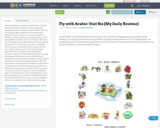
Authored by Belal Joundeya, Fly with Arabic: Unit Six (My Daily Routine) features a variety of language-learning lessons tied together by fun themes related to everyday life, daily schedules, and interpersonal interactions. The unit focuses on the acquisition of listening, reading, writing, and speaking skills, as well as knowledge of Arabic cultures and history.
Unit six is the sixth chapter in the "Fly with Arabic" series, which is comprised of a total of eight units, each containing several lessons, including fill-in-the-blank exercises, open-ended writing practice, and word-matching games, that seek to reinforce specific learning outcomes, such as oral and written production, writing, and reading. Additionally, brief cultural drills are included in each unit, and are designed to add a cultural dimension to each unit's language activities. All units also contain self- assessment checklists to help monitor and measure the learner's progress during the unit.
In summary, through using a number of drills to produce vocabulary, grammar, reading, writing, and speaking skills, including pictures, word-matching games, open-ended writing practice, and fill-in-the-blank exercises, the "Fly with Arabic" series seeks to connect all phases of Arabic-learning into one comprehensive package.

In this story, Jangmi moves from her home in Korea to a new home in the United States. At first she is sad about leaving behind her friends and Korean customs and traditions, but once she arrives in America she begins to adjust. She becomes hopeful that someday America could feel like home, too.
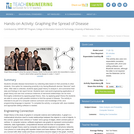
Students simulate disease transmission by collecting data based on their proximity to other students. One option for measuring proximity is by having Bluetooth devices "discover" each other. After data is collected, students apply graph theory to analyze it, and summarize their data and findings in lab report format. Students learn real-world engineering applications of graph theory and see how numerous instances of real-world relationships can be more thoroughly understood by applying graph theory. Also, by applying graph theory the students are able to come up with possible solutions to limit the spread of disease. The activity is intended to be part of a computer science curriculum and knowledge of the Java programming language is required. To complete the activity, a computer with Java installed and appropriate editing software is needed.
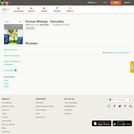
The Sexuality Student Edition book is one of ten volumes making up the Human Biology curriculum, an interdisciplinary and inquiry-based approach to the study of life science.
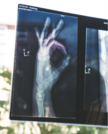
The educational materials "Future Ready: Financial Literacy" provide an overview of influences on health choices, emphasizing the impact of family, friends, culture, media, and technology. It encourages critical thinking, self-perception, and the creation of personal mission statements. The materials also highlight the importance of embracing natural appearance and being conscientious of media consumption for overall well-being.
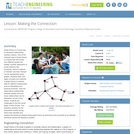
Graph theory is a visual way to represent relationships between objects. One of the simplest uses of graph theory is a family tree that shows how different people are related. Another application is social networks like Facebook, where a network of "friends" and their "friends" can be represented using graphs. Students learn and apply concepts and methods of graph theory to analyze data for different relationships such as friendships and physical proximity. They are asked about relationships between people and how those relationships can be illustrated. As part of the lesson, students are challenged to find the social graph of their friends. This prepares students for the associated activity during which they simulate and analyze the spread of disease using graph theory by assuming close proximity to an infected individual causes the disease to spread.

This realistic fiction story is about a young boy, Max, who is growing up on a large fruit farm in Chili and how he wants to find a friend in a faraway place